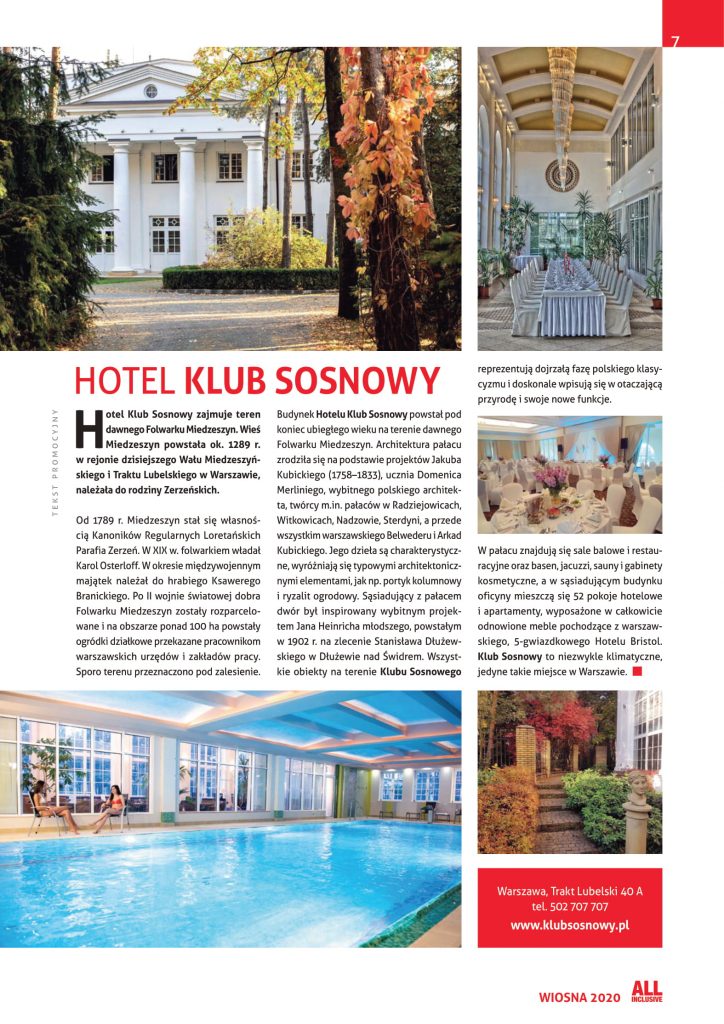Klub Sosnowy occupies the site of the former Miedzeszyn Manor. The village of Miedzeszyn was established around 1289 in the area of today’s Wał Miedzeszyński and Trakt Lubelski, it belonged to the Zerzeński family.
From 1789 Miedzeszyn belonged to the Canons Regular of Loretto, Parish of Zerzeń. In the 19th century, the manor belonged to Karol Osterloff. In the interwar period the estate was owned by Ksawery Count Branicki. After World War II, the Miedzeszyn Manor Estate was parcelled out and over 100 hectares of allotment gardens were created, which were handed over to employees of Warsaw offices and workplaces. Much of the land was designated for afforestation.
The Klub Sosnowy building was constructed at the end of the last century on the site of the former Miedzeszyn Manor. The palace’s architecture was based on the designs of Jakub Kubicki (1758-1833), an outstanding Warsaw architect and pupil of Domenico Merlini, creator of, among others, the Radziejowice, Witkowice and Nadzów palaces, and above all of Warsaw’s Belvedere and Kubicki’s Arcades. J. Kubicki’s works are distinctive due to elements typical of his architectural designs such as the column portico and garden risalit.
The neighbouring manor house was inspired by an outstanding design by Jan Heinrich the younger, created in 1902 on the order of Stanisław Dłużewski in Dłużewo nad Świdrem. All the buildings on the site represent the mature phase of Polish classicism and fit perfectly into the surrounding nature and new functions.
The palace houses ballrooms and restaurants as well as a swimming pool, jacuzzi, saunas and beauty salons, while the neighbouring annex building houses hotel rooms and suites, furnished with completely refurbished furniture from Warsaw’s 5-star Hotel Bristol. Klub Sosnowy is extremely nature friendly, the only such place in Warsaw.

